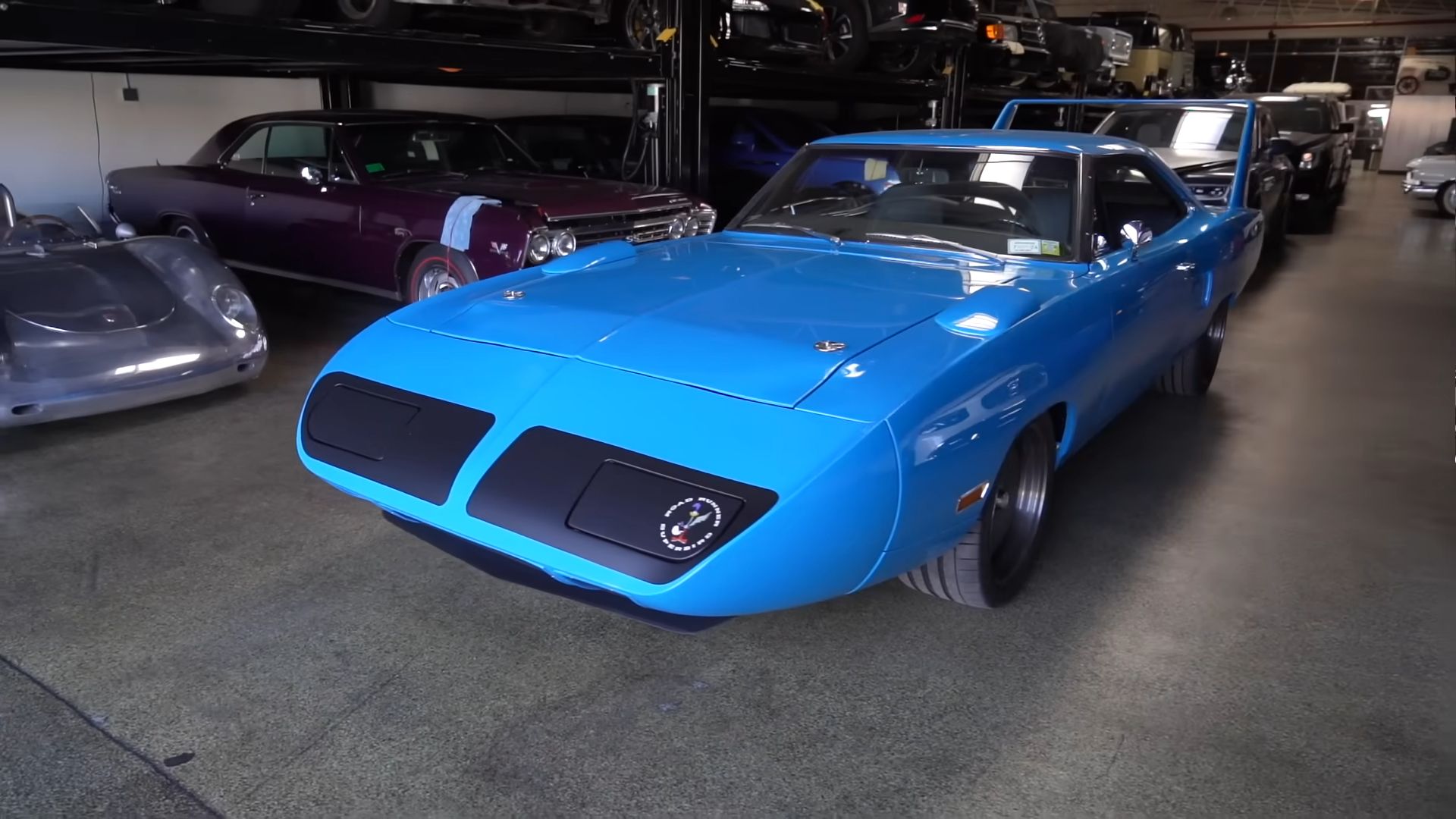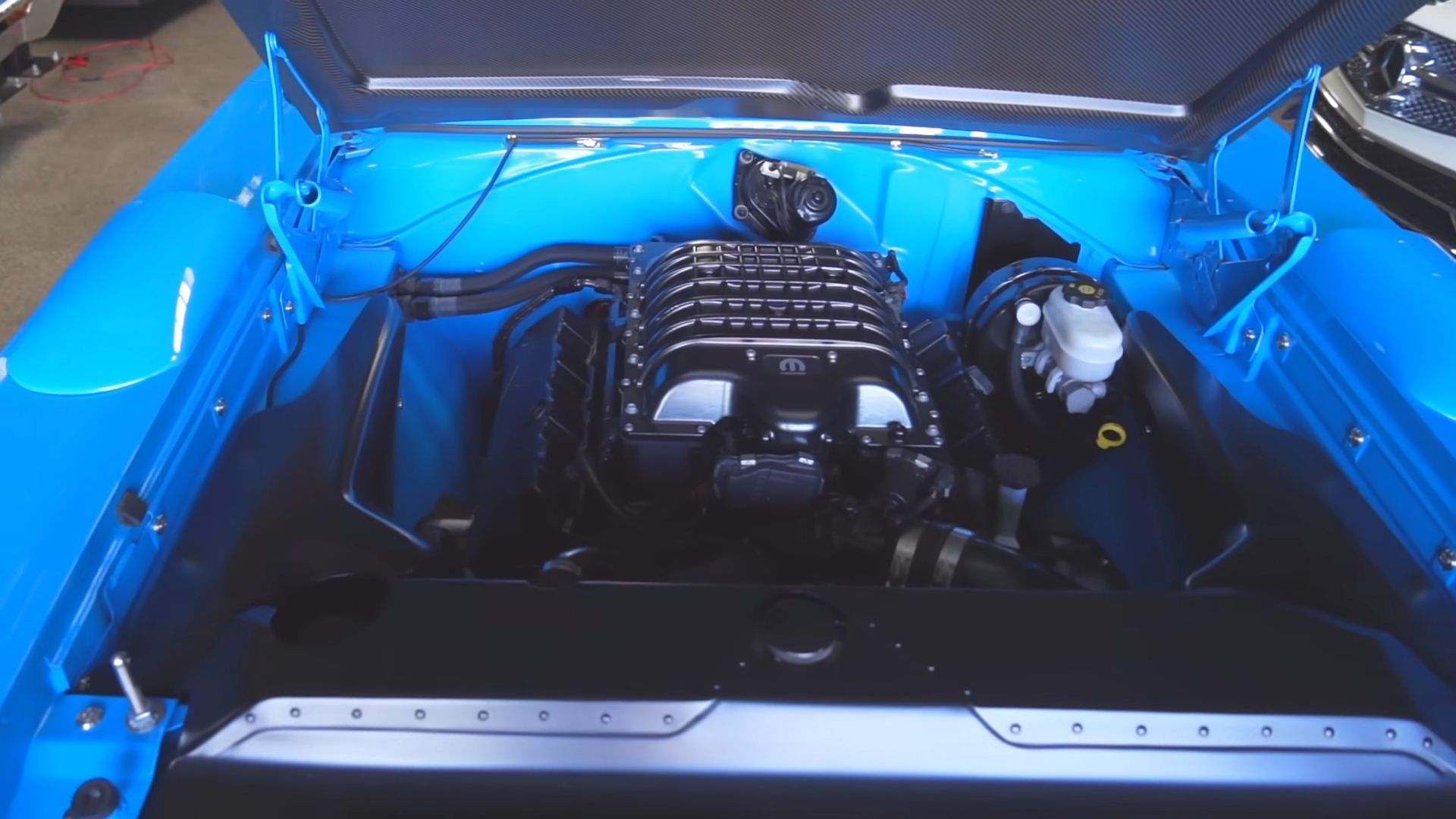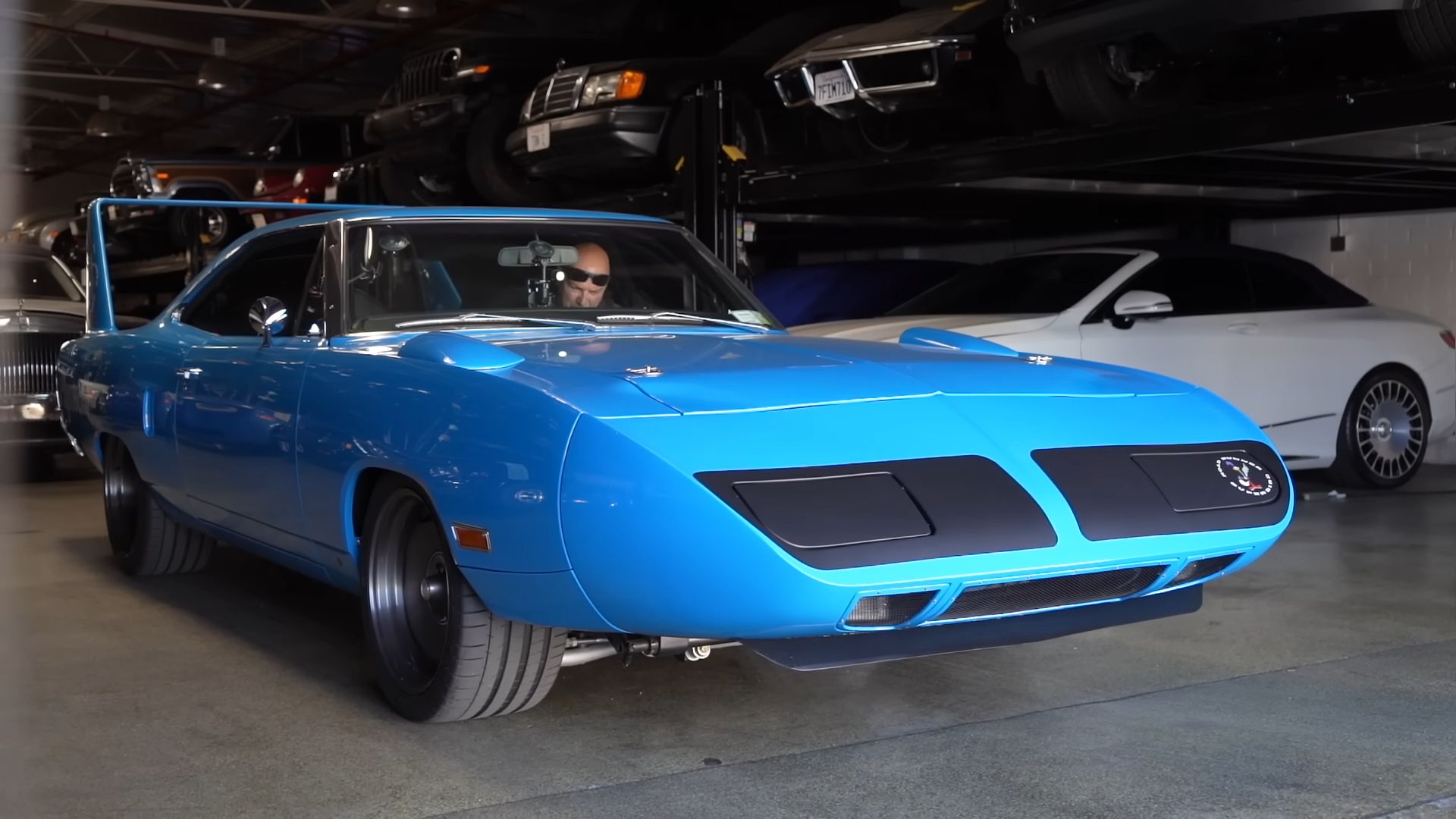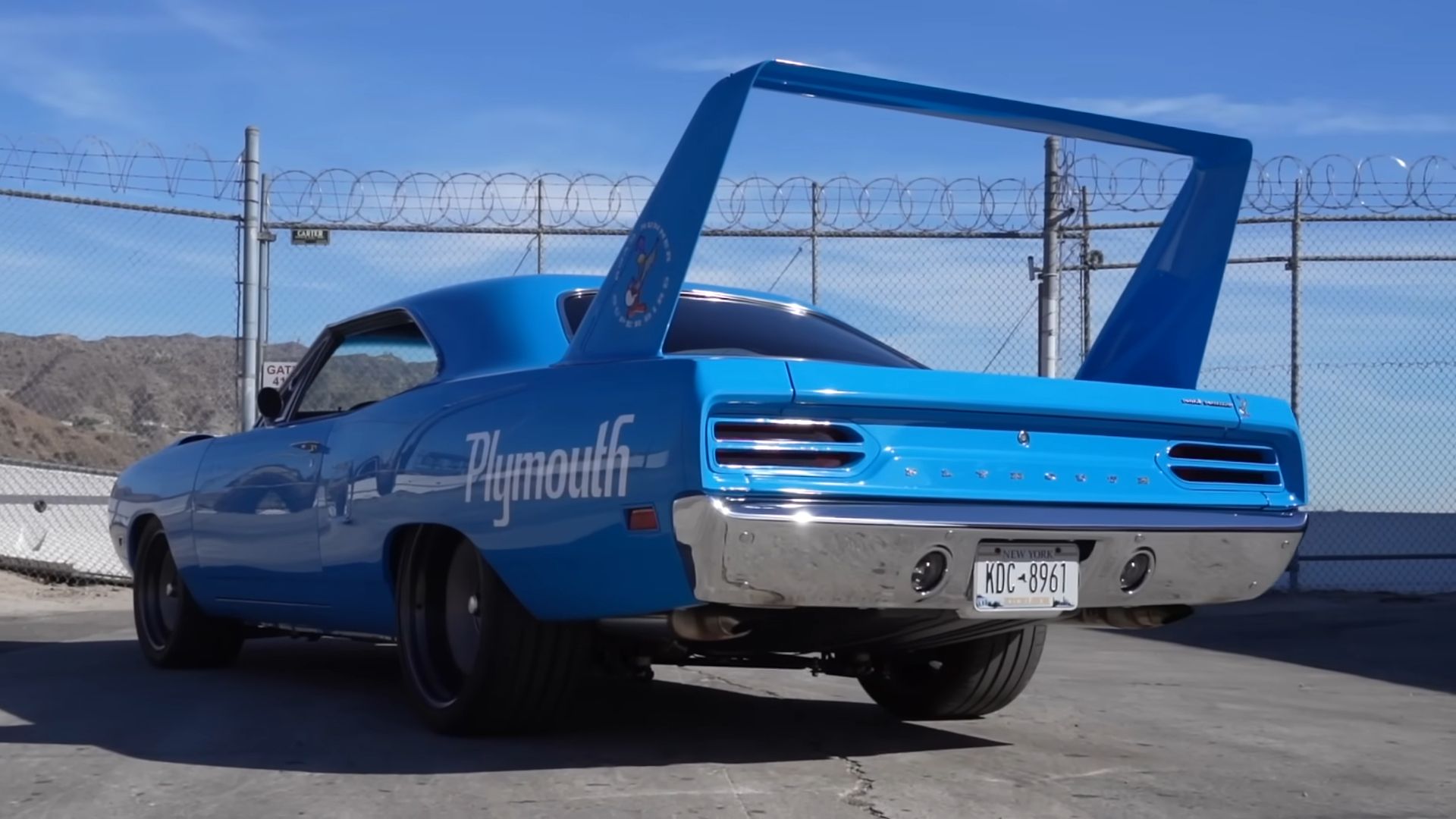The Muscle car era spawned a lot of iconic models, many of which derived from motorsports. Chrysler is responsible for its fair share of legendary models and by far, one of the most iconic MOPARs ever made is the Plymouth Superbird. Naturally, resto-modding a legendary classic like this does not bold well with purists. This particular, 1970 example was pretty far-gone, according to Shawn from AutoTopiaLA, which is why underneath the classic sheet metal lies a new tech. This is easily, one of the best-executed resto-mods, and here’s everything that makes it special.
Period-Correct Looks
The so-called Aero Warriors or aero-body cars were NASCAR homologation specials. Chrysler’s B-body platform was what underpinned the Dodge Charger Daytona and Plymouth Superbird. Both vehicles featured distinctive aerodynamic bodies that set them apart from their more civilian counterparts, the Dodge Charger R/T and Plymouth Roadrunner.
The most distinctive exterior features are the nose cone and extremely tall rear wing, in addition to more subtle features like additional air ducts. The car looks, pretty much, as it would have looked back in 1970, which is commendable. The factory color, which was called “Pretty Blue” has been perfectly replicated through the use of BSAF paint. The wheels are bespoke, one-off pieces done by HRE, measuring 18 inches front and 20 inches rear, and wrapped in 285-section tires at the front and 295 at the rear.
The black accents on the pop-up headlights as well as the Roadrunner and Plymouth decals on the rear wing and rear quarter panel have also been kept. Some of the body panels have been swapped for carbon-fiber equivalents, like the front hood, done by the Carbon Brothers. This should take away a few pounds off the Superbird's 3,814-pound (1,745 kg) curb weight.
Modern Tech Under The Skin
Before purists start raging on, Shawn pointed out that the 1970 Plymouth Roadrunner was “pretty far gone”. Dave Selvaggio, with whom we have an upcoming exclusive (stay tuned for that), brought the car in and did an amazing job of returning the car to its former glory without sacrificing its classic car soul. Underneath there is a bespoke, custom, Selvaggio chassis with Detroit Speed independent suspension, front, and rear.
You want to know about the engine, so here goes. Originally, the Superbirds came with either a 426 Hemi or a 440 Magnum. This one packs neither of those. Instead, it now features, you guessed it, a 6.2-liter, supercharged, Hellcat V-8. They haven't stopped yet as the engine has been fully built. It now features a Demon camshaft, Redeye supercharger, bigger injectors, and CP pistons, among other mods.
The horsepower figure is, reportedly, around the 900 mark, and it goes to the rear wheels through a beefed-up eight-speed, Torqueflite automatic that comes from a Hellcat Redeye. To put things in perspective, the Superbird’s most powerful, road-going version, equipped with the 427 Hemi, was rated at 425 horsepower (317 kilowatts) at 5,000 RPM and 490 pound-feet (664 Nm) at 4,000 RPM. In reality, the Hemi engine reliably built power until 6,000 RPM, at which point the 7.0-liter racing mill, reportedly, put out 470 horsepower (350 kilowatts).
Knowing What To Change And What To Keep
During his walkthrough of this custom, 1970 Plymouth Superbird, Shawn makes a few points out about what this build represents
“The true definition of a resto-mod, which is fully restoring this car and yet, modifying it, but knowing where to not change things. There are certain things that need to stay on these to keep the historic element alive” - Shwan Davis, AutotopiaLA
This is why all the modern touches are extremely subtle. Selvaggio Auto Design works with Gabe's Custom Interiors and they’ve done an incredible job at keeping things old-school while refurbishing the whole cabin. Really, the only more noticeable modernities inside are the rotating selector for the eight-speed automatic and the bespoke steering wheel, which, however, still adheres to 1970, Muscle car trends.
Was It The Right Way To Go?
The short answer is, yes! Purists may frown at the fact that just about half of the 2,700 Plymouth Superbirds made, still exist. Although purists might view this as taking one of the most iconic MOPARs and taking away its classic driving characteristics, we need to look at the facts. The new chassis gives the car actual rigidity and the ability to easily handle over double the original horsepower. The eight-speed Torqueflite has more than double the gears compared to the original Torqueflite 727, three-speed, and as Shawn from AutoTopiaLA demonstrates, it drives better and makes all the right noises. Really, it is a perfectly reimagined American automotive icon.




